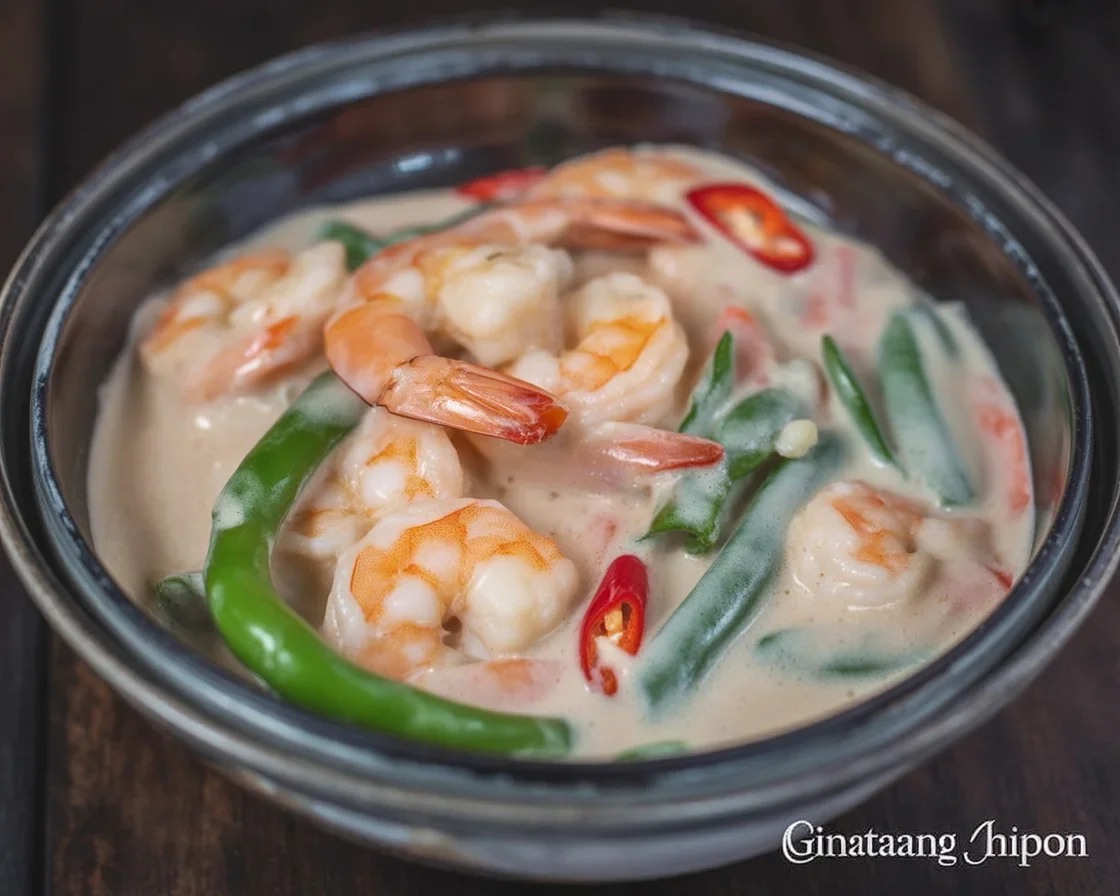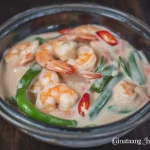Filipino ginataang hipon sounds simple, but have you ever tried making it at home and thought, “Is it gonna be bland or will it taste like memories?” I totally get it. Finding that exact creamy, coconutty goodness—not too salty, not watery—it can be tricky. I grew up eating shrimp in coconut milk, usually as a Sunday treat, so I tend to be picky. If you love Filipino classics like bistek tagalog or want fuss-free stuff to cook for little ones, peep my Filipino recipes for kids too. Okay, onto the main event. Here’s my two cents on all things creamy ginataang hipon, honest and unfiltered. 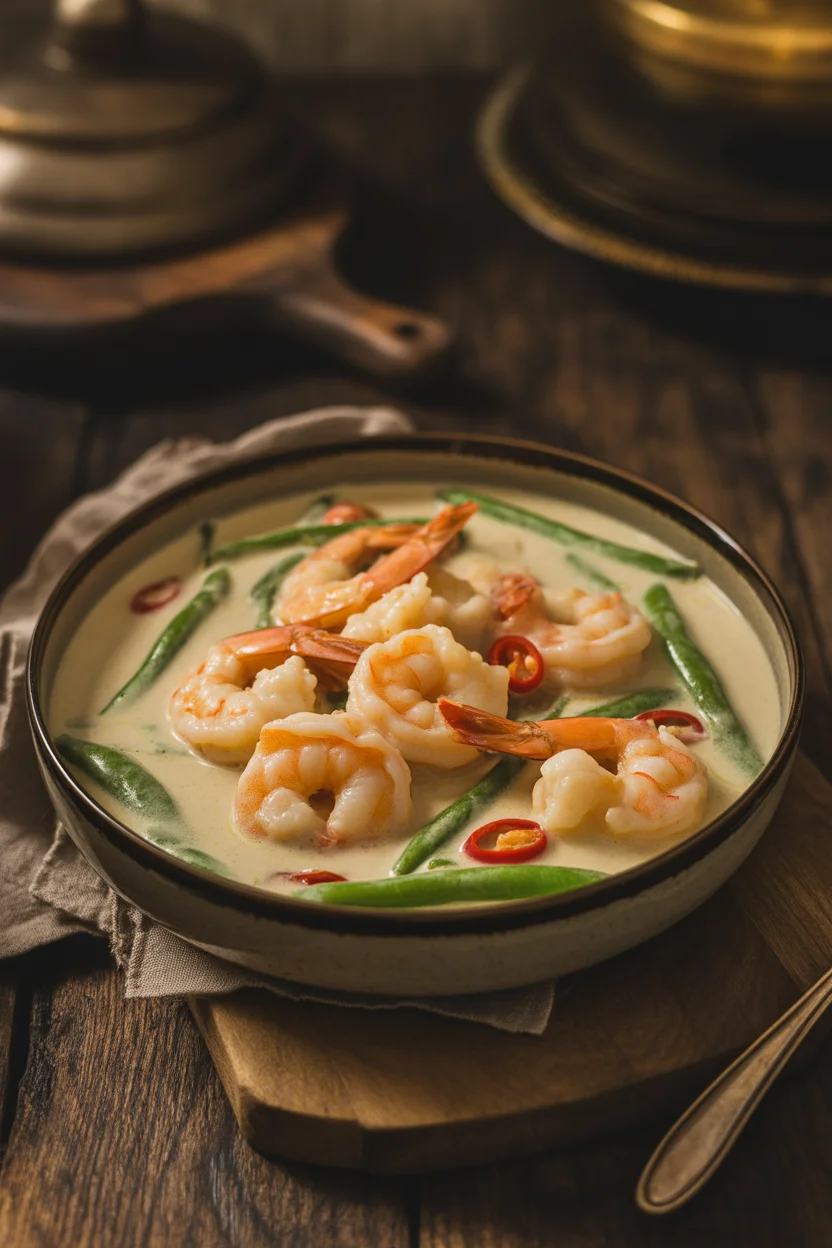
What is ginataang hipon?
Let’s get straight to the point. Ginataang hipon is basically shrimp simmered in coconut milk. That’s the bare bones. But—wait—there’s always a twist; sometimes people add veggies like string beans or squash, sometimes it’s just the shrimp and creamy sauce doing all the talking.
It’s rich, comforting, coconut-forward. Seriously, nothing else tastes quite like ginataang hipon. I’ve seen fancy versions with a bunch of herbs, but my favorite ones are the simple sort you make with what’s in the fridge. The kind that makes you want to eat extra rice. And right after one bite, you’ll know why this Filipino dish is always on the table at family gatherings. 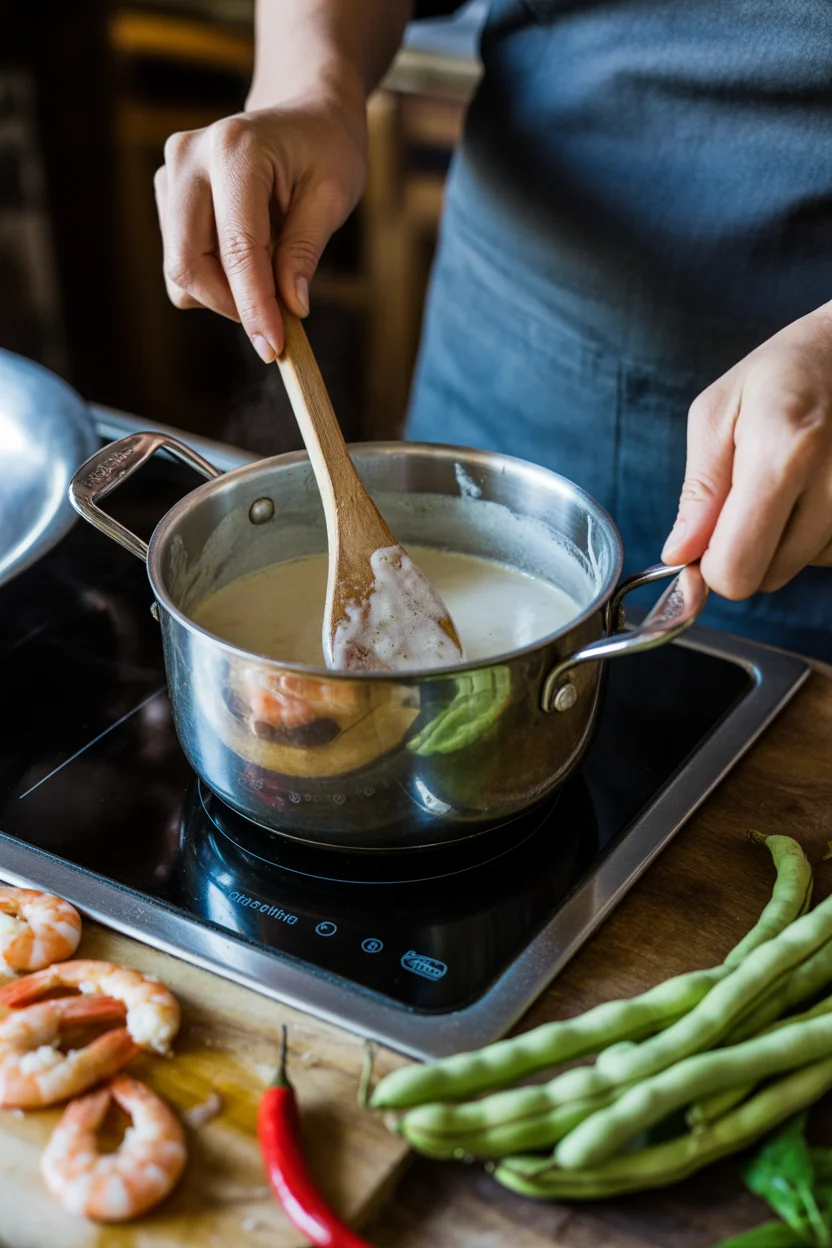
Ingredients
Honestly, most of these you probably have already. Except the shrimp. Unless you’re secretly living by the beach (jealous).
- 1 pound shrimp (medium to large, shell-on is better)
- 2-3 cups coconut milk (fresh is tastier but canned makes life easy)
- 1 thumb of ginger (sliced thin)
- 1 medium onion (chopped)
- 3-4 garlic cloves (smashed, don’t be shy)
- 1-2 pieces green chili (or more, if you wanna sweat)
- 1 tablespoon fish sauce (patis)
- Black pepper (just a shake or two)
- Optional: Sitaw (long beans), kalabasa (squash), or even malunggay (why not?)
You get bonus flavor points if you add some Filipino BBQ or rice on the side. That somehow makes the coconut sauce taste even better. 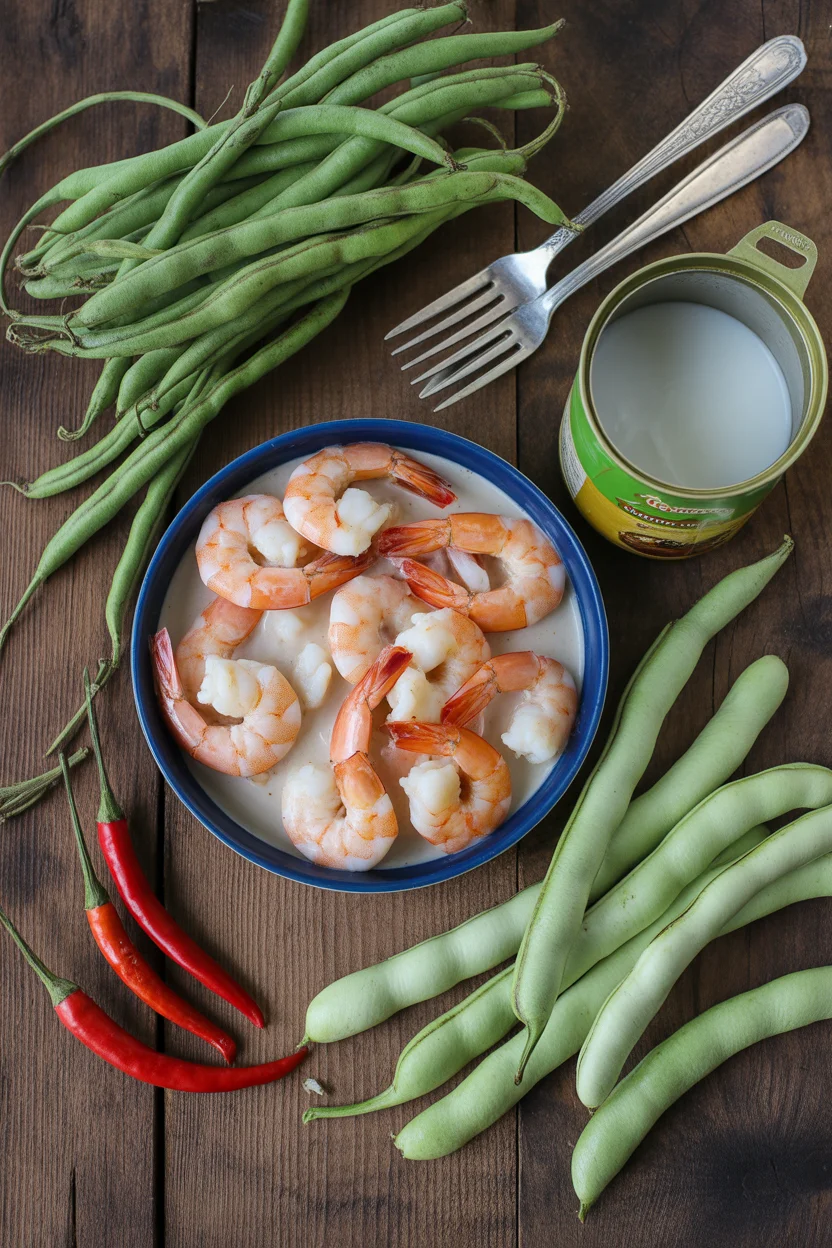
Cleaning and preparing shrimp
Let’s be honest, shrimp can be a hassle. But cleaning it right makes a huge difference (no gritty bites, please).
Start by rinsing the shrimp under cold water. If you want, snip off the antennae with scissors (I always do). Some folks leave the heads on for more flavor; others peel before cooking. I like leaving the shells but give the back a slit and devein them—nobody wants that icky thread. Dry ’em quick with paper towels. That’s it.
The fresher, the better. Avoid shrimp that smells like…well, anything but the ocean. I learned the hard way, trust me.
The first time I cooked with fresh shrimp from the market, I realized how it made the ginataang hipon taste like I was back in my Lola’s kitchen. Never going back to the frozen kind if I can help it.
Cooking in coconut milk
A word to the wise—don’t dump everything in all at once expecting magic. Here’s the casual, no-fuss method.
Start off by frying garlic, onion, and ginger together on medium heat. Your kitchen should already smell amazing. Toss in the shrimp, give it a quick stir ’til it turns barely pink. Pour in the coconut milk. Lower the heat (seriously, don’t let it boil away) and let it simmer gently. Add fish sauce and pepper.
Let the sauce thicken for 7-10 minutes. Don’t rush it. Let those flavors party together. Toss in the chili at the end—unless your taste buds are feeling brave, then add it early.
You want it creamy but not clumpy. If it splits, it’s still good—just swirl and eat anyway. Judgment-free zone here.
Adding vegetables
This part is totally up to you, but I say go for it. Long beans and squash are classic. If you’re feeling adventurous, even eggplant or malunggay works. I cut the sitaw in three-inch lengths and the kalabasa in thick cubes (not tiny, they’re gonna melt). Toss them in before the shrimp if you like yours soft, or halfway through if you want a little bite.
Some folks skip veggies altogether and just stick with shrimp. But trust me, add at least long beans if you have them. It soaks up the coconut flavor, and it makes the dish really pop.
Healthy meals don’t have to be bland; this is proof. If you’re into lighter takes, check out these healthy Filipino recipes.
Seasoning
Seasoning makes all the difference with ginataang hipon. Fish sauce is the classic choice—don’t be afraid to give your sauce a taste. Start light; you can always add more but you can’t undo a salt overload. I also put in pepper, and sometimes a squeeze of calamansi if I’m feeling perky (that’s a little secret). If you want extra richness, toss in a spoonful of coconut cream near the end. Just saying, folks will talk about your ginataang hipon for weeks.
If you like a bit of heat, add chilies last just to let their flavor come out, not scorch your tongue. But ya know, if a little spice makes you happy, why hold back?
Serving suggestions
Alright, let’s make it pop at the dinner table:
- Eat with a huge mound of garlic rice—bonus points if you try garlic sinangag
- Serve with fresh tomato slices, for a little tartness
- Pair with a side of classic Filipino goto to impress your Tita
- Top with chopped green onions or malunggay leaves for extra beautiful color
I once brought this creamy ginataang hipon to a potluck—guy next to me couldn’t stop eating. It’s that kind of thing.
Common Questions
Can I use frozen shrimp for ginataang hipon?
Sure, just thaw completely and dry before cooking. Fresh is better, but frozen still gets the job done in a pinch.
Can I use low-fat coconut milk?
You can, but don’t expect “five-star restaurant” results. It’ll taste healthy, but not as rich. Maybe just stick to the real thing for this dish.
How do I store leftovers?
Pop it in a container in the fridge. Reheat gently—coconut milk can be finicky if nuked or boiled hard.
Is there a way to make it spicy?
Uh, yeah! Toss in more chilies or add a dash of chili flakes. Just taste as you go so you don’t kill your tongue.
Can I skip the fish sauce?
If you really must. Add salt instead, but honestly, nothing beats the umami of fish sauce (it just hits different).
You’re Missing Out If You’re Not Making This
If you love big flavors without a ton of bells and whistles, creamy ginataang hipon totally fits the bill. Give it a shot next time you spot some good shrimp at the market. If you want variations or need extra inspo, try out Ginataang Hipon na may Sitaw at Kalabasa from Panlasang Pinoy, check this cool Ginataang Hipon & Kalabasa version, or for classic homey vibes see this Ginataang Hipon Recipe. I swear, once you nail the creamy ginataang hipon, you’ll never order it from a restaurant again—your kitchen will feel like the real heart of a Filipino home. 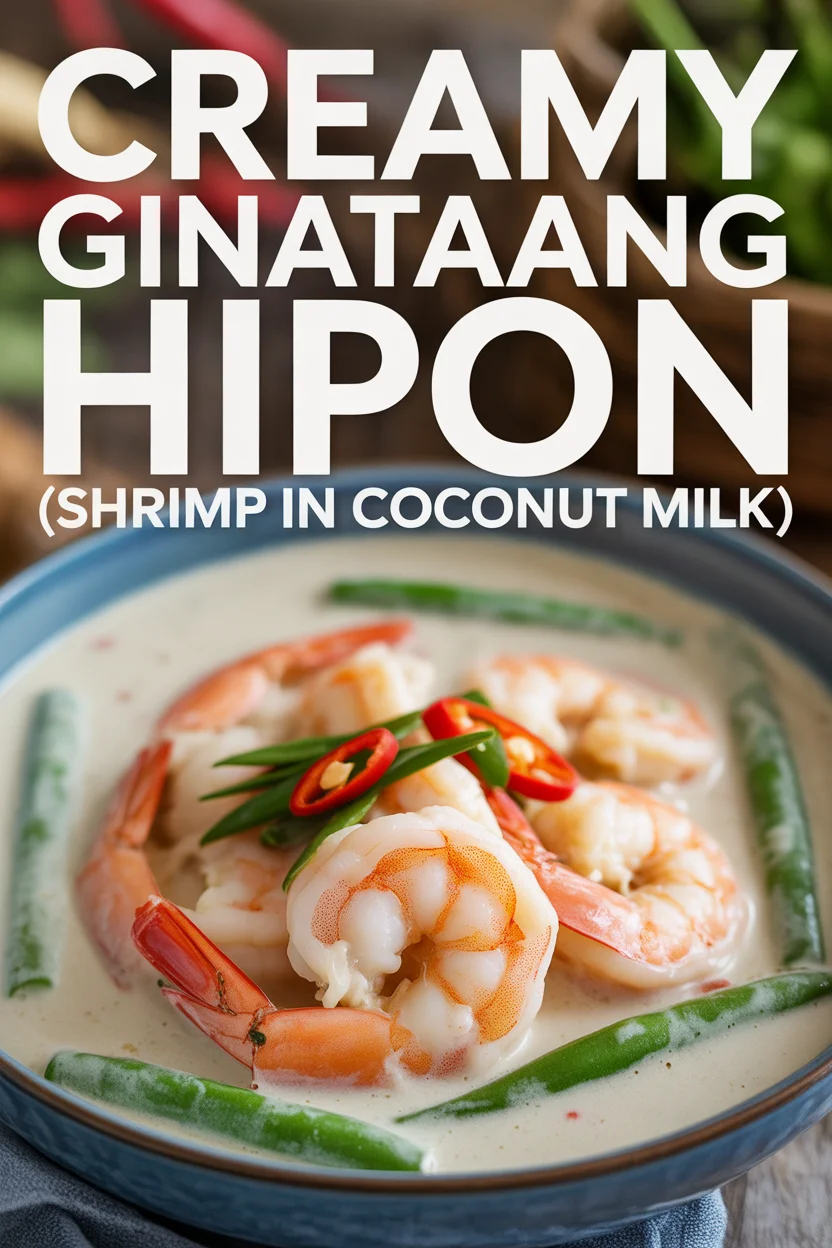
Ginataang Hipon
Ingredients
Main Ingredients
- 1 pound shrimp (medium to large, shell-on) Fresh shrimp is preferred.
- 2-3 cups coconut milk Fresh is tastier but canned works.
- 1 thumb ginger (sliced thin)
- 1 medium onion (chopped)
- 3-4 cloves garlic (smashed) Don't be shy with the garlic!
- 1-2 pieces green chili Adjust to your spice preference.
- 1 tablespoon fish sauce (patis) Essential for flavor.
- 1 shake black pepper To taste
Optional Vegetables
- sitaw (long beans) Optional.
- kalabasa (squash) Optional.
- malunggay (moringa) Optional.
Instructions
Preparation and Cooking
- Start by rinsing the shrimp under cold water. Optionally, snip off the antennae and devein them.
- In a pan, heat some oil and fry the garlic, onion, and ginger together on medium heat until fragrant.
- Add the shrimp to the pan and stir until it turns barely pink.
- Pour in the coconut milk and lower the heat to let it simmer gently. Do not let it boil.
- Add the fish sauce and black pepper and let the sauce thicken for 7-10 minutes.
- Add the chili to the dish. Further adjust seasoning to taste.
Adding Vegetables
- Chop the optional vegetables (sitaw, kalabasa) and add them to the pan before or halfway through cooking based on your texture preference.
Serving Suggestions
- Serve hot with a mound of garlic rice, fresh tomato slices, or a side of classic Filipino goto.
- Top with chopped green onions or malunggay leaves for garnish.
